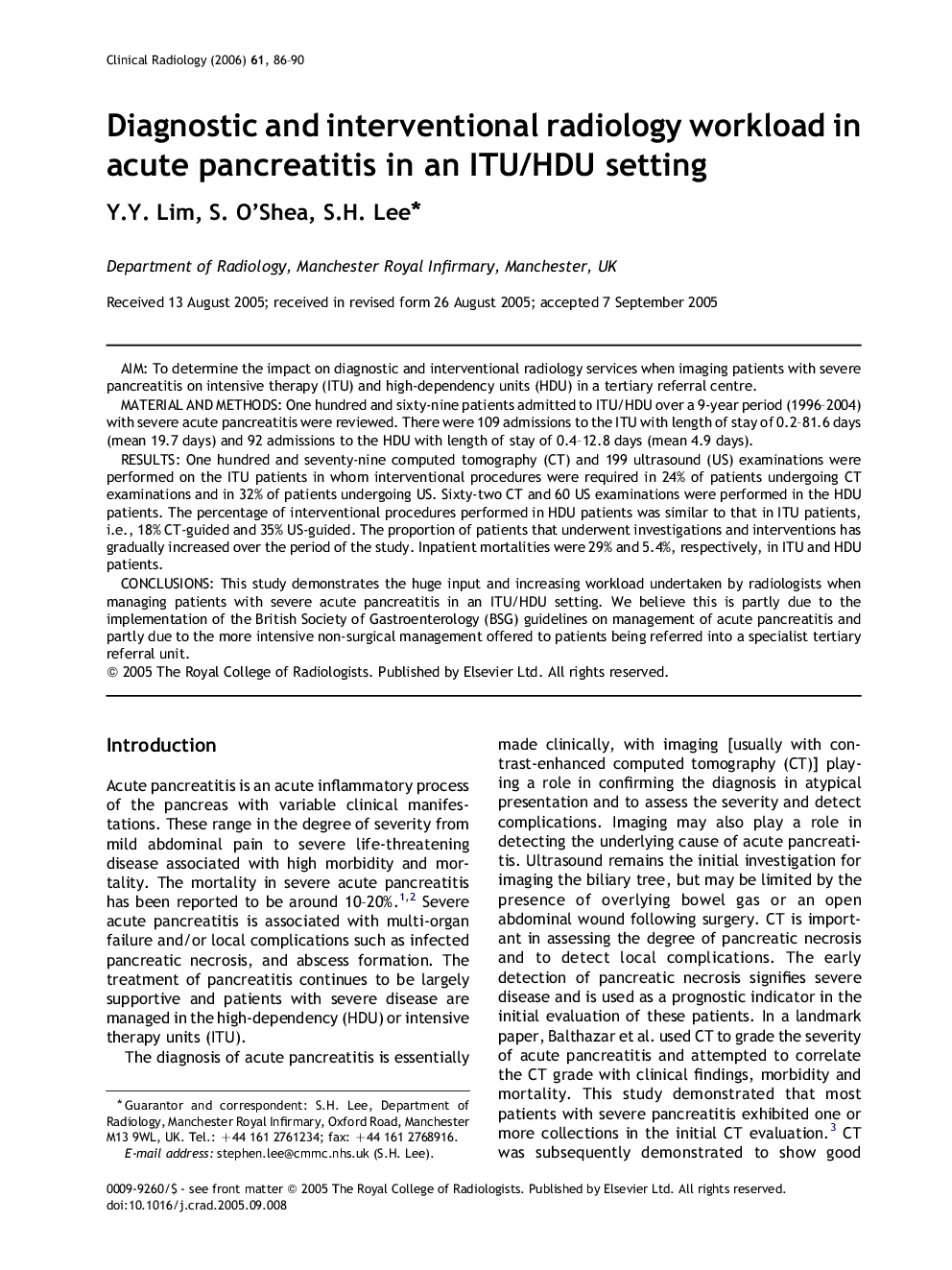| Article ID | Journal | Published Year | Pages | File Type |
|---|---|---|---|---|
| 3984034 | Clinical Radiology | 2006 | 5 Pages |
AIMTo determine the impact on diagnostic and interventional radiology services when imaging patients with severe pancreatitis on intensive therapy (ITU) and high-dependency units (HDU) in a tertiary referral centre.MATERIAL AND METHODSOne hundred and sixty-nine patients admitted to ITU/HDU over a 9-year period (1996–2004) with severe acute pancreatitis were reviewed. There were 109 admissions to the ITU with length of stay of 0.2–81.6 days (mean 19.7 days) and 92 admissions to the HDU with length of stay of 0.4–12.8 days (mean 4.9 days).RESULTSOne hundred and seventy-nine computed tomography (CT) and 199 ultrasound (US) examinations were performed on the ITU patients in whom interventional procedures were required in 24% of patients undergoing CT examinations and in 32% of patients undergoing US. Sixty-two CT and 60 US examinations were performed in the HDU patients. The percentage of interventional procedures performed in HDU patients was similar to that in ITU patients, i.e., 18% CT-guided and 35% US-guided. The proportion of patients that underwent investigations and interventions has gradually increased over the period of the study. Inpatient mortalities were 29% and 5.4%, respectively, in ITU and HDU patients.CONCLUSIONSThis study demonstrates the huge input and increasing workload undertaken by radiologists when managing patients with severe acute pancreatitis in an ITU/HDU setting. We believe this is partly due to the implementation of the British Society of Gastroenterology (BSG) guidelines on management of acute pancreatitis and partly due to the more intensive non-surgical management offered to patients being referred into a specialist tertiary referral unit.
